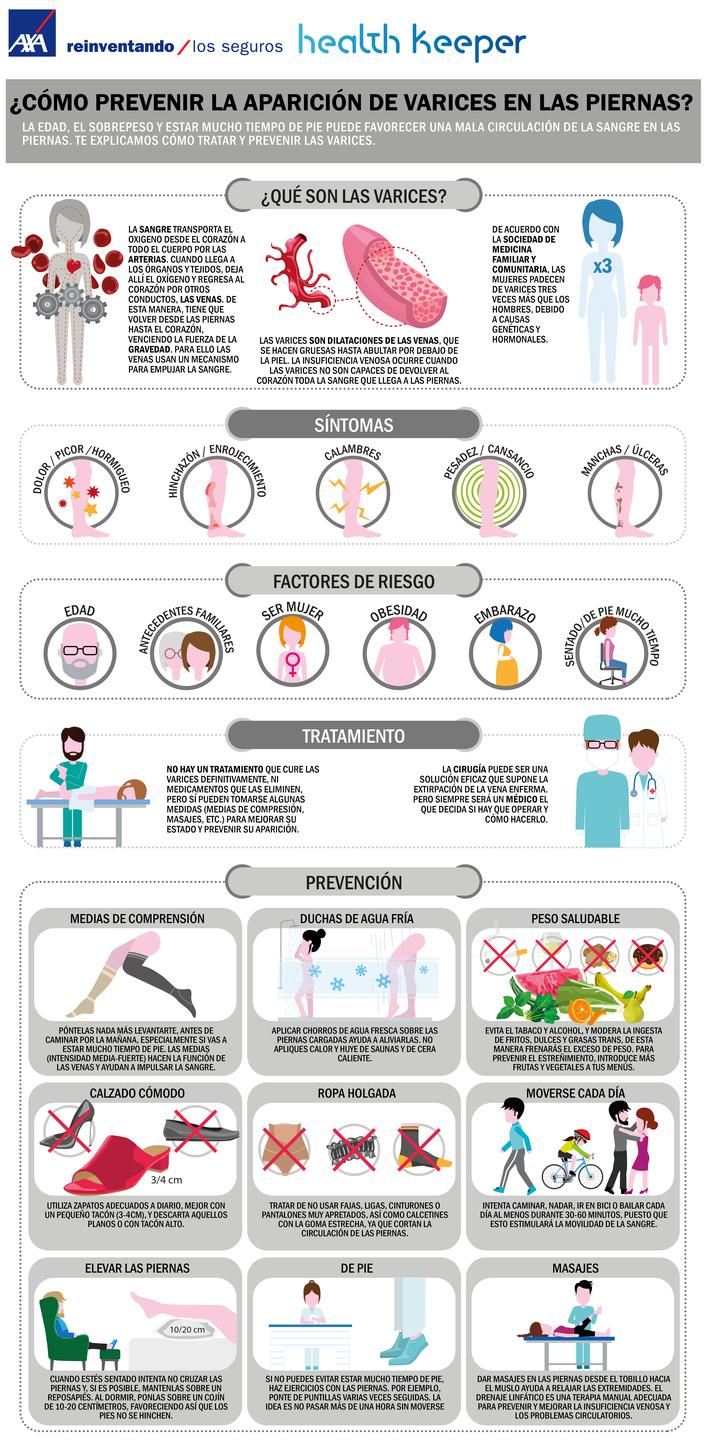By clothing-bag, 04/11/2022
Varicose veins in the legs: why they occur and how to prevent them
Varicose veins do not distinguish by sex. They affect both women and men. They are generally located in the superficial venous system of the legs and are the most common venous disorder: more than 20% of the world population suffers from it. But what are they? These are veins that are dilated in such a way that they can be seen in relief on the skin. These inflamed vessels are usually seen in a purple or bluish tone in the calf area and on the inside of the legs.
The phlebologist José Luis Ciucci (M.N. 49.473) explained to Con Bienestar: “Lower limb varicose veins are the dilation/elongation of a vein with loss of the function. They have a large genetic component, since not everyone can develop or have them. There are varicose veins that are primary and others that are secondary. The first are those that originate directly because the patient is born with venous insufficiency due to a valvular disorder of the venous circulation. The latter appear as a result of different events such as, for example, pregnancy, deep vein thrombosis, chronic venous insufficiency, any sign of venous hypertension that generates reflux in the venous system, causing them” .
In this regard, the specialist added: “Blood that flows through the superficial venous system passes deep through the perforating veins. When these veins get sick, there is a reflux, because they become communicating vessels and the blood passes from deep to superficial, generating hypertension at the level of the superficial venous system and, as it is not prepared, it dilates and elongates because the veins are weaker and this reflux generates what is called venous hypertension syndrome, which is what leads the patient to have unpleasant symptoms such as heaviness , pain, nocturnal cramps and edema of the lower limbs”.
// Simone Biles and the mental demons that haunt high performance sport

The specialist clarified that there are different degrees of varicose veins: from telangiectasias (known as spider veins), reticular varicose veins and other more important ones. “The highest degree is chronic venous insufficiency that occurs due to insufficiency of the perforating veins. They usually have the color of dry leaves, hypodermitis at the level of the lower part of the leg where, if it evolves, it can generate a venous ulcer”.
@BogochIsaac @CreaseSkid How the fack does a certificate make it safer for me to go to the gym? As a vaccinated or non… https://t.co/dRTEG3077s
— Vince Thu Jul 22 13:08:01 +0000 2021
Symptoms of varicose veins
The main indicator symptom of varicose veins is the constancy of visible varicose veins in the leg. In addition, the affected person usually presents the following signs:
Causes of varicose veins
Varicose veins occur when the veins do not properly carry blood to the heart. This accumulates in them and that is why they dilate and become tortuous.
When the arteries and capillaries send oxygen-rich blood from the heart to the entire body, it must pass through the venous valves and return to the heart. Sometimes the valves that are supposed to let blood through and then close to prevent it from returning become weak and lose their elasticity. This event causes the veins to fill with blood that does not circulate properly and dilate. When dilated, these veins twist to fit into their normal space and varicose veins are produced.
// Pfizer assured that a third dose of its coronavirus vaccine can increase the neutralization of the Delta variant by 100 times
Recommendations to prevent them
Ciucci explained that “varicose veins can be prevented by leading ahealthy lifestyle, with exercise and good activity of the lower limbs, controlling the sole of the foot, among others such as the use of graded compression stockings, as in the case of pregnant women, to avoid venous hypertension< /b> and dilation by hormones”. The specialist's advice is:
Regarding the different medical treatments , the specialist concluded: “For telangiectasia, the best thing is laser or radiofrequency . When the patient has pain, cramps, heaviness or tingling, medication is also key. For varicose veins, some schools use laser, others sclerotherapy or hybrid methods such as microsurgery, endovascular laser or radiofrequency. Basically what you have to do is prevent varicose veins and maintain body weight . Being overweight or obese does not help, since anything that is compression increases venous pressure in the lower limbs and promotes the appearance of varicose veins”.
Related Articles